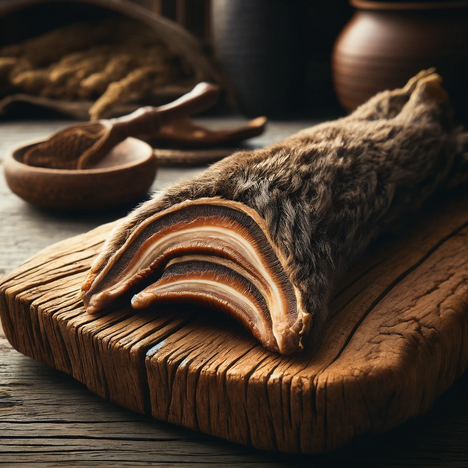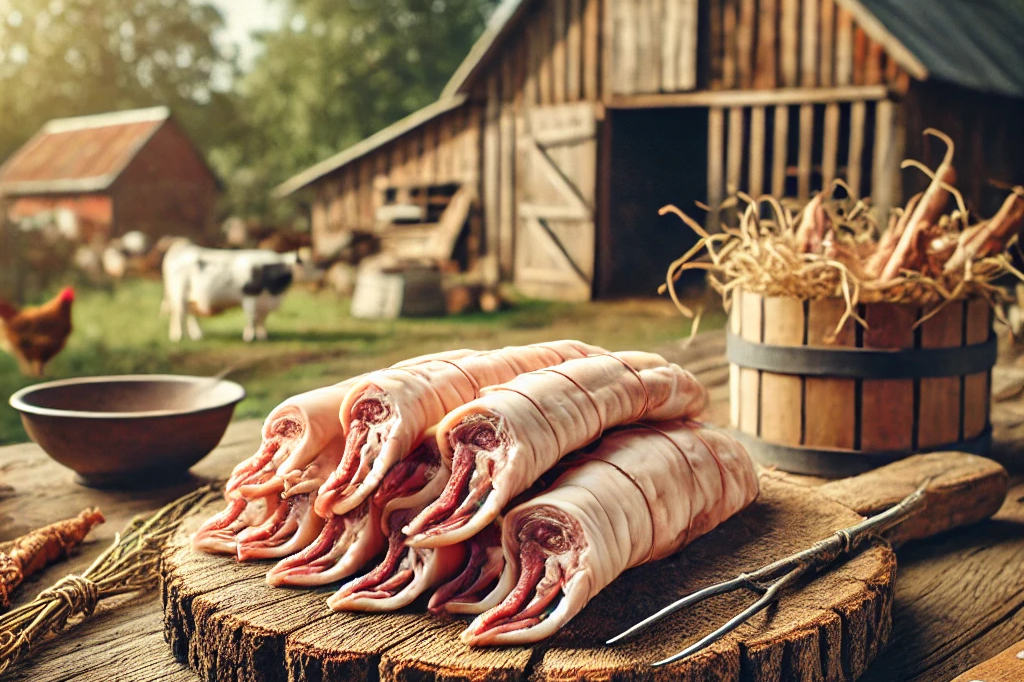Lamb's tail

Lamb tail is a part of the lamb that is often regarded as a waste product. However, it is a tasty and nutritious chew for dogs that offers many benefits. In this article, you will find out what lamb tail is, how it is processed and what advantages and disadvantages it has for your dog.
What is a lamb's tail?
Lamb's tail is the tail of a lamb, which is usually cut off before the animal is slaughtered. It consists of cartilage, bone, fat and skin and is around 10 to 15 centimetres long. Lamb tail is rich in protein and fat and has an intense flavor that attracts many dogs.
How is lamb tail processed?
Lamb tail is usually gently dried to extend its shelf life and improve its consistency. No chemical additives, flavorings or colorings, sugar or preservatives are used. The result is a natural chew made from 100% lamb.
What are the benefits of lamb tail for dogs?
Lamb tail has several benefits for dogs that are given it regularly as a snack:
- It promotes dental health by gently cleaning teeth and reducing tartar.
- It strengthens the chewing muscles and the jaw joint, which is important for the dog's food intake and well-being.
- It ensures good digestion as it contains fiber and supports the intestinal flora.
- It is hypoallergenic and is therefore suitable for dogs with food allergies or intolerances. Lamb is a rare source of protein that is often better tolerated than beef or pork.
- It is low in fat and calories and can therefore also be eaten by dogs that need to watch their weight.
What are the disadvantages of lamb tail for dogs?
Lamb tail also has some disadvantages for dogs that you should be aware of:
- It can have splinters or sharp edges that can cause injury to the mouth or digestive tract. For this reason, dogs should not be left unattended while chewing and should always be given plenty of fresh water.
- It can lead to diarrhea or flatulence if the dog is not used to it or eats too much of it. Therefore, the amount should be increased slowly and adjusted to individual tolerance.
- It can be difficult to find or expensive, as it is not available in every pet store or online store.
Lamb tail is a healthy snack for dogs that offers many benefits. It is tasty, nutritious, tooth-friendly, muscle-boosting, digestive and hypoallergenic. However, it also has some disadvantages, such as the risk of splinters or digestive problems. It should therefore only be fed in moderation and the dog should be monitored. If you pay attention to these points, you can make your dog very happy with lamb tail.
If you notice any signs of hypersensitivity or poisoning in your dog, you should see your vet immediately. We are not a substitute for a vet, but we try to be as accurate as possible. Every dog reacts differently and we recommend you get a second opinion or consult your vet if in doubt.
Stay healthy and take good care of your four-legged friend!😊
Similar to Lamb's tail
Buffalo tail is a part of the tail of buffalo, which live mainly in Asia, Africa and North America. Buffalo are large, strong animals that belong to the cattle family. Their tails are long and bushy...
Sheep's tail is the tail of a sheep, which is usually dried or smoked to preserve it. It consists of cartilage, bone, fat and fur and has an intense smell and taste that attracts many dogs. Sheep's...
Pork tail is the tail of a pig that can be used as food or animal feed. It consists of meat, fat, cartilage and bones and has a curved shape. Pork tails can be bought fresh, smoked or pickled, and...
The goat's tail is a part of the goat's skeleton that consists of cartilage and bone. It is usually around 20 to 30 cm long and has a curved shape. It can be offered with or without fur. Goat's tail...



